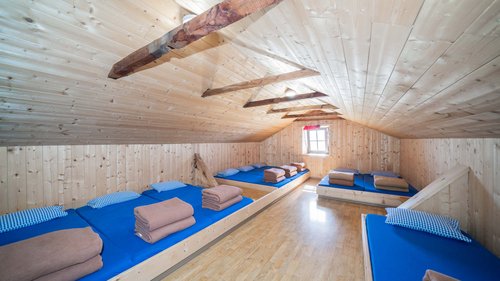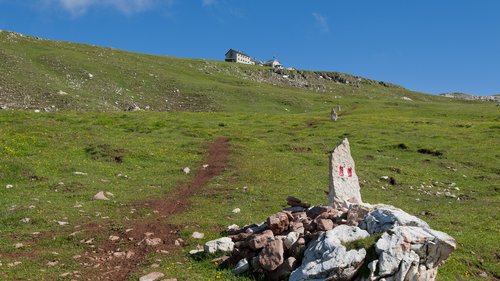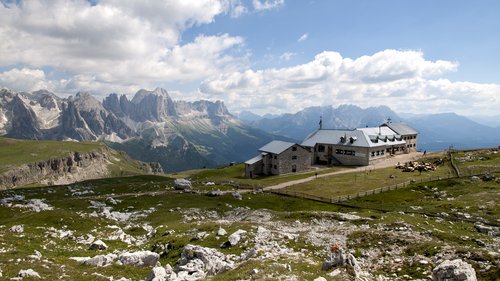
History and stories
At the end of the 19th century, people were purists! In other places, luxury hotels were being built for the “new tourists” of that time; however, the German and Austrian Alpine Association (DÖAV) had no interest in building on the Sciliar/Schlern. Hans Santner, the first climber and eponym of the Santnerspitze (“Punta Santner” in Italian), was only interested in establishing a simple mountaineer’s hut. A hut for tourism was far from his mind. His Santnerhanshütte mountain hut, the first building of the Schlernhaus, was completed and opened in 1885: a kitchen, two dormitories, and an outbuilding for riding animals, pack animals, and mountain guides. In total, the hut provided accommodation for 50 people.
The saga of King Laurin
Anyone who has ever seen the Catinaccio/Rosengarten in the last sunlight, who knows the unique reddish glow that appears just before the walls and pinnacles turn a pale grey, will immediately believe what folklore says about it. In the days when giants and dwarves still populated the Dolomites, the dwarf King Laurin ruled over the Catinaccio/Rosengarten, and his countless subjects mined the mountain for precious stones and valuable ores. Inside the mountain, he hid immeasurable treasures, including an invisibility cloak and a belt adorned with precious stones that gave him the strength of twelve men.
In front of his rock castle, he cultivated a beautiful garden covered with a golden silk thread. Roses blossomed in it all year round, exuding a beguiling fragrance that made everyone in the vicinity happy. But woe betide anyone who dared to enter the garden or pick a rose!
One day, he heard that the king at the Adige/Etsch river was offering his beautiful daughter Simild (also spelt “Simhilde”) in marriage. Like many others, King Laurin asked for her hand, but he did not receive an invitation to the great tournament games. So he decided to travel to the royal castle under the protection of his invisibility cloak, and when he caught sight of the beautiful princess Simild, he fell deeply in love with her. Unseen, he approached her and carried her off to his castle, while the other knights devoted themselves entirely to the tournament games. She lived in his underground crystal castle, surrounded by immeasurable treasures, but sad and homesick.
It so happened that the last two opponents in the tournament, Hartwig and Wittich, asked the Gothic King Dietrich of Bern for help before the decisive contest. He rode to the Catinaccio/Rosengarten with his men. They tore the golden silk thread and trampled the roses. King Laurin, full of anger, rode up on his white horse to confront the culprit. With the help of his invisibility cloak and belt, he initially had the upper hand in the fight, but when his cloak and belt were snatched from him by Dietrich, he lay helpless on the ground. Bound, he was led to Dietrich’s kingdom, and Simild was freed from captivity. The dwarf people, now without a king, retreated into the passages and caves of the mountain and were never seen again. Laurin, however, knowing full well that he would never see his beloved rose garden again, cast a terrible curse that would extinguish the splendour of the roses forever: the rose garden was turned to stone, and neither the bright day nor the dark night would ever see the rose garden again.
But in his spell, Laurin had forgotten the twilight. And so it happens that at dusk, the whole group of mountains is covered once more in the colour of roses before nightfall turns them back into pale mountains.
























